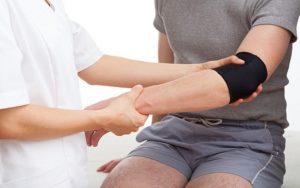
Pronator teres syndrome: Prevalence, causes, symptoms, and treatment
Pronator teres syndrome, or PTS, is a condition that impacts a specific muscle in the forearm that can lead to pain in the hand. Some sufferers find that it causes weakness, limiting the use of the hand.
Pronator teres syndrome occurs when the median nerve, which passes between two parts of the pronator teres muscle in the arm, gets trapped. As a result, there is usually pain and numbness in both the forearm and hand. Sometimes, the symptoms of pronator teres syndrome get mistaken for carpal tunnel syndrome. Although we can’t say for certain why, people between the ages of 40 and 50 are more likely to experience PTS. Continue reading…
Although sitting too close to the television won’t affect your vision, there are other habits you probably do on the daily that can. The eyes are very sensitive, so it doesn’t take much to cause damage or even infection, which can have serious consequences on your vision. So, you will want to avoid the following eight habits, as they can wreak havoc on your eyesight. Continue reading…
Rhomboid muscle pain: Causes, symptoms, and diagnosis
Rhomboid strain occurs in a group of muscles that are located in the upper back, just beneath the neck and the upper shoulder blades. The muscles are involved in controlling the arms and shoulders, so they are used very often throughout the day. The rhomboid muscles are very thin and are shaped like a triangle. They’re connected to the spine and the medial edges of the shoulder blades, making them important for maintaining good posture.
Excessive use of your arms and shoulders can easily lead to rhomboid pain. Playing sports like golf or tennis can overstretch the rhomboid muscles, causing them to feel pain and soreness. Carrying heavy loads on your upper back, as well as short bursts of abnormal movement, can elicit rhomboid muscle pain. Continue reading…
Common habits that cause varicose veins
Varicose veins are those unsightly blue veins that run up and down your leg. As you age, you may notice more and more of them developing. Although they’re not usually dangerous, they are embarrassing and prevent you from wearing shorts or skirts. There are many causes of varicose veins including genetics, age, and even pregnancy. But did you know that some of your everyday habits contribute to their formation? Below you’ll find some habits that cause varicose veins so you can make sure you’re avoiding them. Continue reading…
15 bone strengthening exercises for strong bones
Our bones are strong parts of our body that help support and protect our various organs. They are also vital for producing red and white blood cells, storing minerals, and enabling mobility. All of these aspects contribute to our overall health, which makes keeping them strong and healthy a priority.
Unfortunately, getting older can slowly lead to bone loss, increasing susceptibility to bone related conditions that compromise function. However, weak bones can be remedied with exercise that specifically boosts bone and muscle strength.
One-third of people over the age of 65 falls each year, leading to severe disability or even death. Exercise has been proven to prevent bone depreciation and falls in the elderly, increasing quality of life. Continue reading…